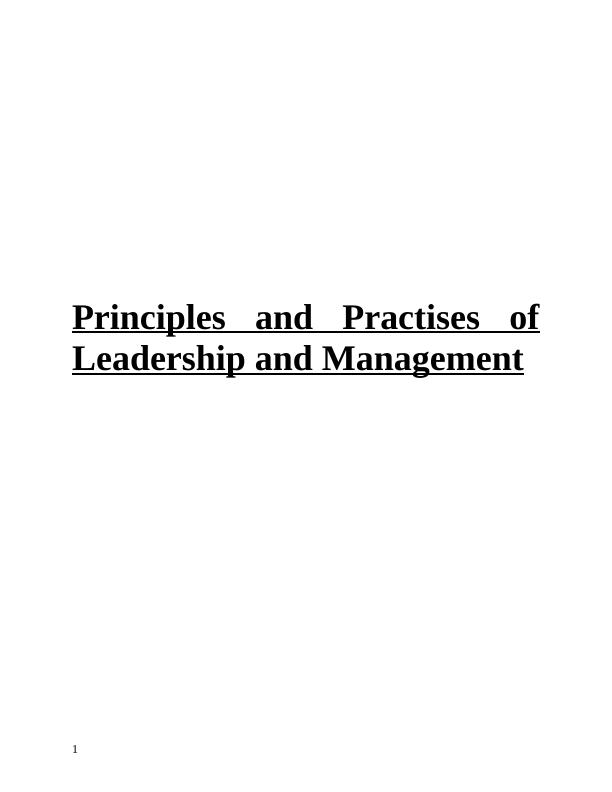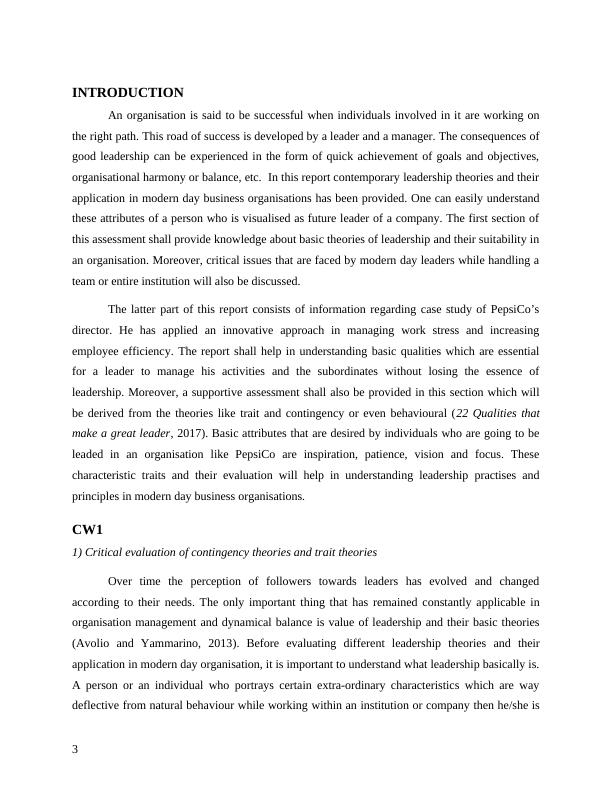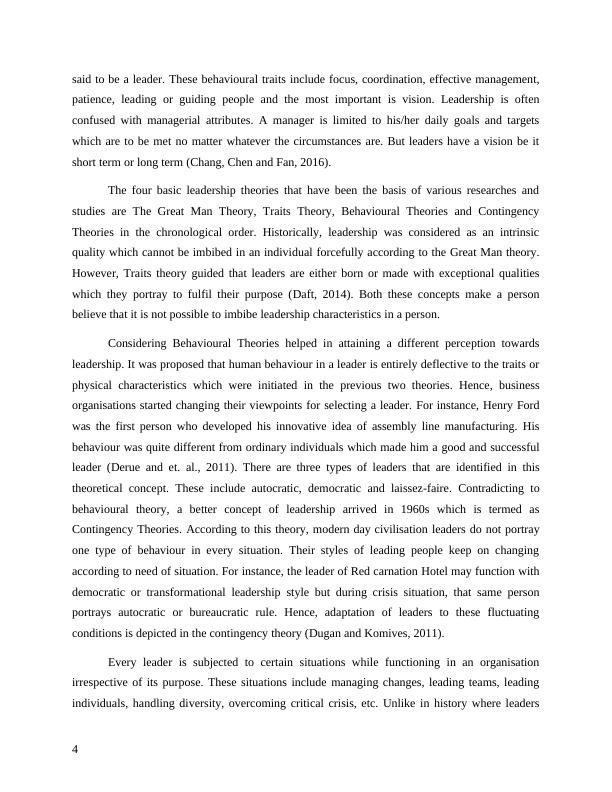Principles and Practises of Leadership and Management
16 Pages4875 Words143 Views
Added on 2023-04-06
About This Document
This report provides knowledge about basic theories of leadership and their suitability in an organisation. It discusses critical issues faced by modern day leaders and explores a case study of PepsiCo's director. The report helps in understanding the essential qualities for a leader and the principles of leadership in modern day business organisations.
Principles and Practises of Leadership and Management
Added on 2023-04-06
ShareRelated Documents
End of preview
Want to access all the pages? Upload your documents or become a member.
Principles And Practices Of Leadership And Management | Assignment
|9
|2673
|145
Leadership and Management Theories and Practices: A Case Study of Jeff Bezos and Amazon
|20
|1060
|305
Management and Leadership in Community Services Essay 2022
|5
|1564
|14
Leadership Plan Report 2022
|16
|3679
|25
Evolution and Applicability of Leadership Theories
|9
|2674
|27
Leadership in Business - Assignment Solved
|8
|3025
|22




